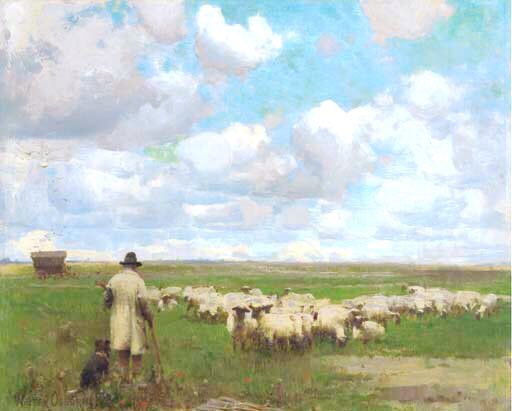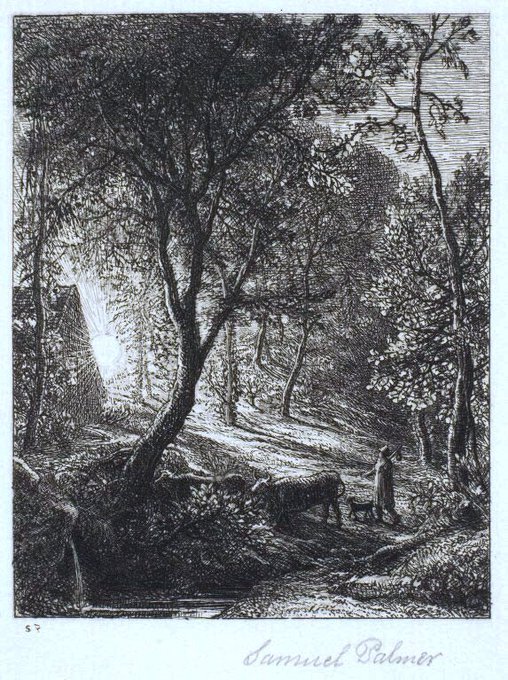Another theme was depicting Dublin streets. He did this in such a way as to bring the past to life & give an idea of Victorian & Edwardian life in the Capital.
It’s the final week of the May offer on my work.
Two original drawings for just €50/£45 before 1st June. The offer has been made possible by the support of an anonymous benefactor.
We both believe that art should be accessible to everyone. Take a look!
I hope that my drawings capture a world where hope, love & empathy are important.
Towards the Light (2020)
His landscapes are a harmonious marriage of wondrous skies & carefully observed trees & fields. Sunset (Engraving, 1850), Harvesting (1851) & Landscape with Watermill (c1855)
Palmer was a big believer in plein air (outside) painting. He has left us detailed sketch books. View from Rook’s Hill, Kent (1843), Evening in Italy (1845), Christian Descending into the Valley of Humiliation (1848) & Kensington Gardens (c1848)
Palmer visited Italy for two years (1837) The Colloseum, Rome (1837-9), Italian Hill Town (c1838) & Cypresses of the Villa d’Este (1838). I particularly love his intense study of Cypresses. In the 19th C Cypresses were popular with aesthetes
He travelled to Wales & Devon. The Waterfalls, Pistil Mawddach, N Wales (1835-6), Llywyngwynedd & Part of Llyn-y-ddina (1835), N Coast of Devon with Lundy Island (c1835) & Harlech Castle (c1830-60s). He was continuing the tradition of artists exploring Burke’s sublime & beautiful
Palmer moved to London in 1835. In order to improve his commercial success he painted more conventional work. Timber Wagon (nd) is a transitional work where his interest in the Romantic intersects with the classical view of 19th century landscape.
His images have grown in popularity in the 20th C. It’s often the case that artists are drawn to the tradition of the countryside at times of great social change. Harvesters by Firelight (1830), The Timber Wain (1833-4), The Barns (1820-30s) & The Golden Valley (nd)

































